Hardwood floors are a beautiful and durable addition to any home. However, they can be susceptible to damage, and one of the most common problems is large holes. Holes in hardwood floors can be caused by everything from pet claws to dropped furniture, and they can be a real eyesore. Fixing a hole in your hardwood floor can be daunting, but it’s not as hard as you might think.
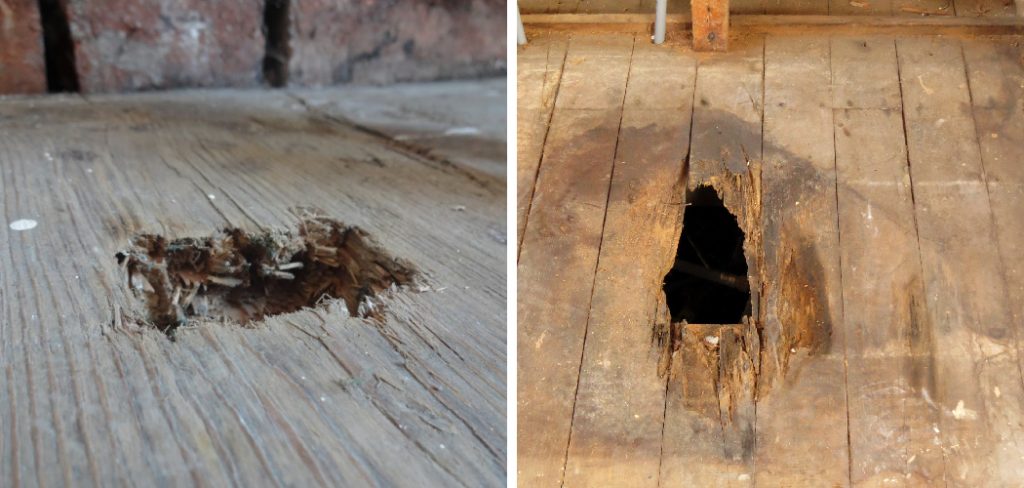
With the right tools and some patience, you can repair that hole and have your floor looking good as new in no time. In this blog post, you will learn how to fix a large hole in hardwood floor.
Summary: If you have a large hole in your hardwood floor, there are a few ways to fix it. You can use a patch kit to fill in the hole, or you can use a flooring glue to fix the hole permanently.
Materials You Need
- Hardwood flooring
- Jigsaw
- Wood glue
- Clamps
- Drill
- Screws
- Sandpaper
- Stain (optional)
- Polyurethane (optional)
10 Steps for How to Fix a Large Hole in Hardwood Floor
Step 1: Clean Out the Hole
Chisel away any jagged or rough edges of wood around the hole. Sweep or vacuum out any sawdust or debris.
Step 2: Cut a Piece of Plywood to Fit Snugly Into the Hole
Use a sharp utility knife or jigsaw to cut a piece of plywood that is slightly smaller than the hole. The plywood should fit snugly into the hole without any gaps.
Step 3: Attach the Plywood to the Floor
Use screws or nails to attach the plywood to the floor, ensuring it is level with the surrounding area. Use a putty knife or trowel to fill in the hole with wood putty. Smooth the surface so it is level with the rest of the floor. Allow the putty to dry completely before proceeding.
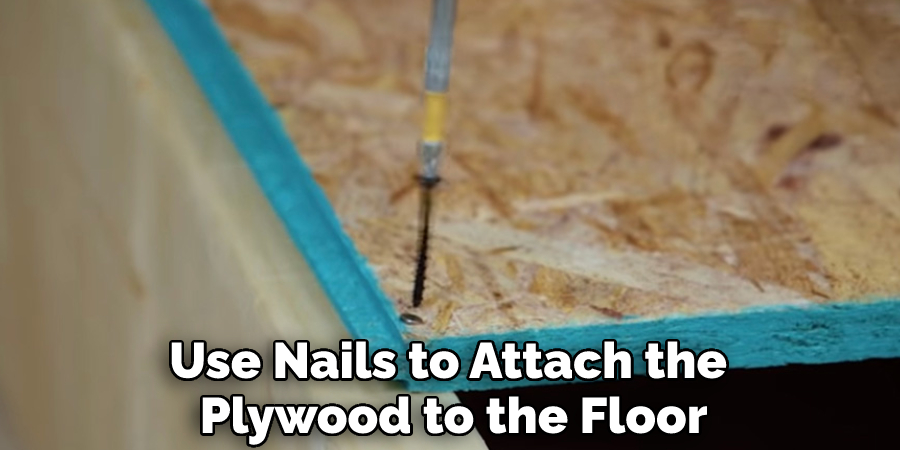
Step 4: Stain or Paint the Area
Once the putty is dry, you may want to stain or paint the area to match the rest of the floor. This is optional but can help make the repair less noticeable. Allow the stain or paint to dry completely before walking on the area.
Step 5: Finish With a Sealant
Apply a clear sealant to the area to protect the repair and help it blend in with the rest of the floor. Allow the sealant to dry completely before walking on the area.
Step 6: Let the Glue Dry Completely
Depending on the type of glue you used, this could take anywhere from a few hours to overnight. Once the glue is dry, you can sand and refinish the floor to match the surrounding area.
Step 7: Clean Up Any Excess Glue
Use a putty knife or other sharp object to scrape away any excess glue that may have oozed out from under the patch.
You may also need to use fine-grit sandpaper to smooth out the area before refinishing.
Step 8: Refinish the Floor
Sand the area around the patch to blend it in with the rest of the floor. Then, apply a new finish to the entire floor to match the original finish.
Step 9: Trace the Outline of the Patch
Use a pencil to trace the outline of the patch onto the hardwood floor. Carefully cut out the traced section using a jigsaw or other appropriate tool. Fit the patch into the hole and secure it in place with nails or adhesive. Once the patch is installed, seal it by applying a thin layer of polyurethane or another sealant. Allow the sealant to dry completely before walking on the patch.
Step 10: Vacuum and Mop the Area
Once again, be sure to vacuum and mop the area around the hole to remove any dust or debris. Your hardwood floor should now be good as new. If you have a large hole in your hardwood floor, don’t despair! With a little time and effort, you can easily fix it yourself. Just follow the steps above, and you’ll have your floor looking good as new in
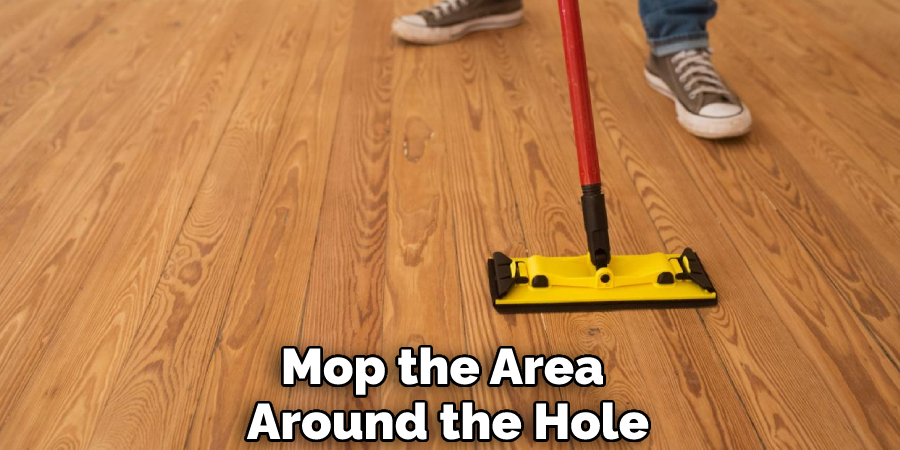
Safety Tips for How to Fix a Large Hole in Hardwood Floor
- Always wear safety goggles and gloves when working with wood or tools.
- Make sure the area around the hole is well-lit and clear of debris before you start work.
- If the hole is near a wall, be careful not to damage the drywall while you’re working.
- Use a sharp wood chisel to remove any rough edges around the hole.
- Cut a piece of hardwood flooring to fit snugly into the hole.
- Use a hammer and nails or screws to attach the new piece of flooring into place.
- If necessary, use a saw to trim the new piece of flooring to fit perfectly.
- Use a putty knife to apply wood filler around the hole’s edges, and let it dry.
- Once the wood filler is dry, sand it down until it’s flush with the rest of the floor.
- Finish by applying a new coat of sealant or varnish to the repaired area.
Is It Necessary to Fix a Large Hole in Hardwood Floor Without Replacing the Entire Board?
While it is possible to replace the entire board, this may not be necessary if the hole is not too big. There are a few different ways to fix a large hole in the hardwood floor.
One way is to use wood filler. This type of putty is specially designed for filling in holes in wood. Once the filler has dried, it can be sanded down and stained to match the rest of the floor. Another option is to use a patch. A patch is a piece of wood that is cut to fit over the hole. The patch can then be nailed or glued into place. Special kits also contain everything you need to fix a large hole in the hardwood floor.
These kits usually include a piece of matching wood veneer, adhesive, and instructions. Following the instructions carefully, you should be able to repair the hole without replacing the entire board.
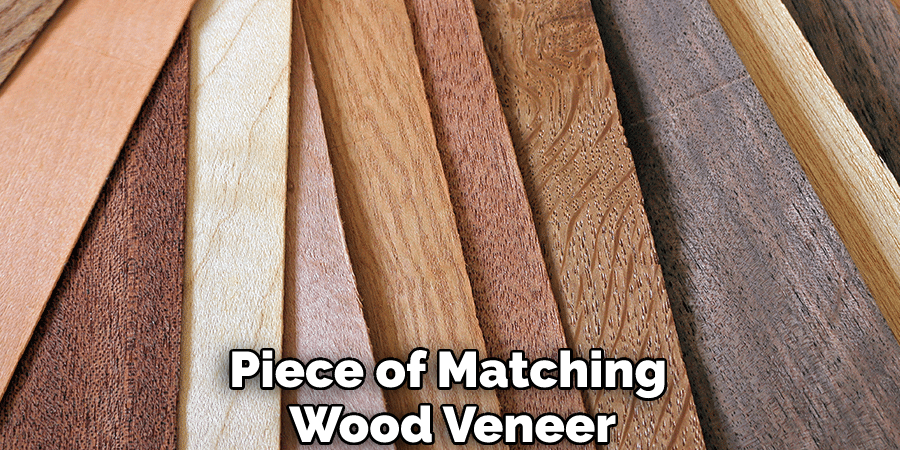
What is the Best Option for Fixing Hole Using Wood Filler or Wood Putty?
You can fill in a large hole in your hardwood floor in two ways: wood filler or wood putty. Wood filler is a substance that is used to fill in small cracks and holes in wood and is typically made from sawdust or wood shavings mixed with a binder. Wood putty, on the other hand, is a pliable substance that is used to fill in larger cracks and holes and is typically made from wood pulp mixed with a binder.
So, which is the best option for filling in a large hole in your hardwood floor – wood filler or wood putty? Well, it really depends on your specific needs and preferences. Wood filler is the way to go if you need a quick and easy solution. However, wood putty is better if you want a more durable solution that will last longer.
Do You Sand Before Filling Holes?
It is important to sand the area around the large hole before filling it in. This will help create a smooth surface for the filler material to adhere to. Use fine-grit sandpaper and sand in small, circular motions until the entire area is smooth. Once you’ve finished sanding, vacuum up the dust and debris.
Now you’re ready to fill the hole. You can do this in a few different ways, but we recommend using wood putty or filler. Apply the putty to the hole, using a putty knife or your fingers, and smooth it out so that it’s level with the surrounding surface. Allow the putty to dry completely before sanding it down (if necessary) and applying a new coat of finish.
If you’re uncomfortable using putty or filler, you can also try patching the hole with a piece of matching wood. Cut a piece of wood that’s slightly larger than the hole, and use wood glue to attach it to the floor. Make sure the piece is level with the surrounding surface, then wait for the glue to dry completely before sanding and refinishing.
Does Toothpaste Work to Fill Holes?
When you have a large hole in your hardwood floor, it can be tempting to try and fix it yourself. However, if you don’t know what you’re doing, you could worsen the problem.
Toothpaste is not a good option for filling holes in hardwood floors. It’s not strong enough to hold up over time and will eventually crumble, leaving your floor looking worse than before. The best way to fill a large hole in hardwood floors is to use a wood filler. Wood fillers come in different colors, so you can match them to your floor.
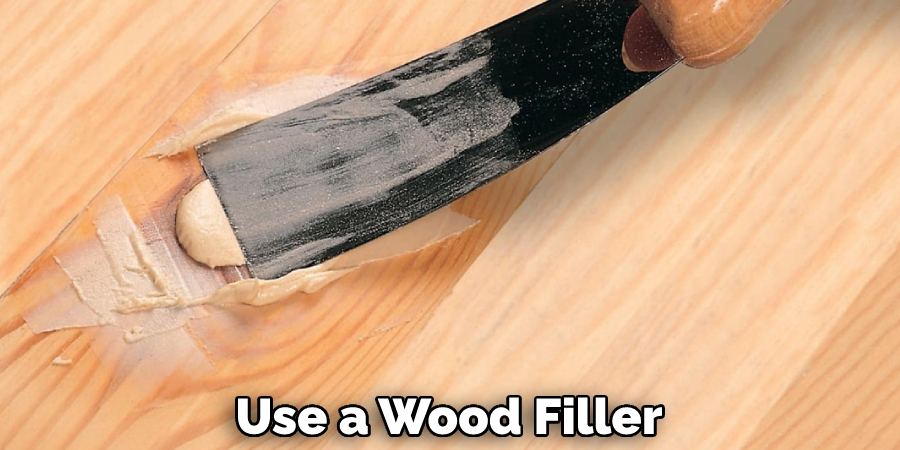
Conclusion
One must first consider the damage’s severity to fix a large hole in the hardwood floor. If the hole is large and deep, it is best to replace the entire board. However, if the hole is relatively small and shallow, it can be repaired with some wood filler. Once the filler has been applied, sanding down the surface will help to create an even finish. Finally, staining or painting the area may be necessary to match the surrounding hardwood.
Following these simple steps makes it possible to repair a large hole in the hardwood floor without replacing the entire board. I hope this article has been beneficial for learning how to fix a large hole in hardwood floor and always ensure the steps discussed here are followed chronologically.
